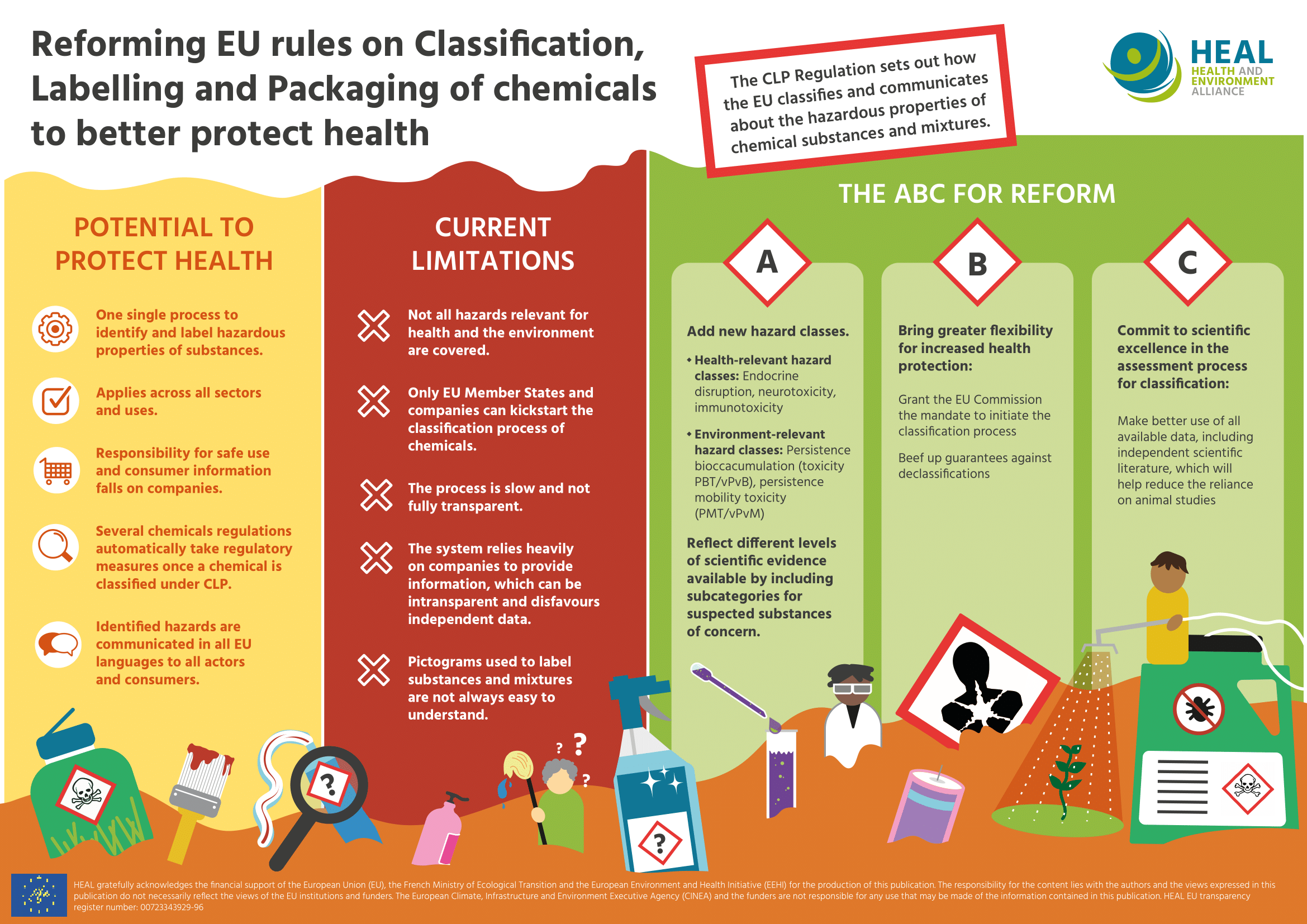Have you wondered about the warning symbol written on the label of your bathroom cleaner, dishwasher detergent, tin of paint or scented candle? The Classification, Labelling and Packaging (CLP) Regulation sets out how the EU classifies and communicates about the hazardous properties of chemical substances and mixtures.
The Health and Environment Alliance (HEAL), a founding member of the EDC-Free Europe campaign, released a new infographic and campaign page to help you navigate through the CLP Regulation and why its upcoming revision can be a health promotion opportunity.
Open any cupboard in your home: how many items with a hazard warning symbol can you count? Many of us are familiar with at least some of these symbols, but few may fully understand them. Even fewer people have basic knowledge about the process for how the European Union decides which chemical substances and mixtures should be assigned a particular hazard and how it should be labelled for it.
Introduced in 2008, the CLP Regulation has created a single harmonized process to identify and label the hazardous properties of chemical substances and mixtures. It applies across all sectors and uses, and identified hazards are communicated in all EU languages to all actors and consumers.

Potential to protect health and the environment
The CLP Regulation is an important cornerstone of EU chemicals legislation in part because several sectoral chemicals regulations automatically take regulatory measures once a substance is classified under CLP. It is therefore very important that chemicals that are hazardous to human health and the environment are properly identified through CLP and that this classification can feed into other chemical legislations, which can then trigger adequate measures to restrict the use(s) of chemicals of concern.
Current limitations
However, in its current form CLP has several important limitations, HEAL says. To start with, only EU Member States and companies can kickstart the classification process of chemicals. This process is often slow and not fully transparent. What’s more, the system relies heavily on companies to provide information and often disfavours independent data.
What’s that warning symbol written on the label of your scented candle? 🕯️🧐
— Health and Environment Alliance (HEAL) (@HealthandEnv) April 21, 2022
The #EU_CLP defines how the EU classifies & communicates about hazardous chemicals.
Reforming this juggernaut legislation is a big opportunity to better protect health.
👀👉 https://t.co/yXzy060op6 pic.twitter.com/qLKG273UY9
In addition, not all hazards relevant for health and the environment are covered, such as endocrine disruption, neurotoxicity or immunotoxicity. An important step for protecting people against endocrine disruptive chemicals (EDCs) is the inclusion of this hazard class, as well as environment-relevant hazard classes: persistence bioaccumulation (toxicity PBT/vPvB) and persistence mobility toxicity (PMT/VpVm).
The European Commission is expected to reveal its plans for the revision of the CLP in the summer of 2022. Last year, thirteen EDC-Free Europe members submitted comments to the roadmap laying out the European Commission intentions for this targeted revision.
You can download the infographic as PDF or PNG format. Visit HEAL’s campaign page on the CLP reform to learn more about the upcoming CLP reform.
%20(720%20%C3%97%20720%20px)%20(3).png)